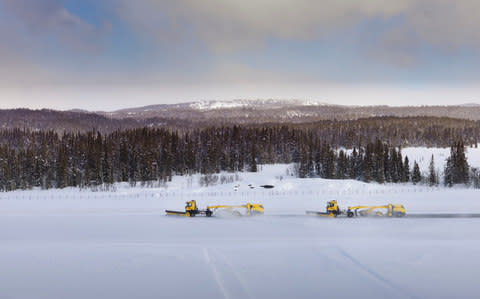Autonomous snow ploughs clear the way for reliable winter air travel

Driverless snow ploughs have been successfully tested on an airport runway for the first time, potentially heralding a new era in autonomous snow clearing.
The machines were developed by Yeti Snow Technology, an outfit co-owned by Swedish product development firm Semcon and Norwegian equipment manufacturer Øveraasen. The result is the first driverless snowploughs which, at 20 metres long and 5.5 metres wide, are able to clear an area of 357,000 square meters every hour.
The test took place at Fagernes Airport in Leirin, Norway, 200 kilometres north of Oslo. While the British Isles and parts of Europe have been badly affected by the 'Beast from the East' storm, Scandinavia has always had a healthier relationship with snow.

But even in countries like Norway and Sweden, where heavy snowfall is anticipated, there are problems with staffing and accurate weather predictions. Runways must be completely clear of snow for aircraft to operate, which necessitates having drivers on permanent standby – inevitably there are delays when the tarmac can't be prepared in time for scheduled movements.
“This is a good example of how autonomous vehicles can increased profitability and add value for people,” said Semcon CEO Markus Granlund.
“Autonomous snowploughs will allow airports all over the world to streamline their activities and reduce delays for their passengers.”
Removing the need for a driver means that several snow ploughs can be used simultaneously for faster effects. The precision with which the snow ploughs operate, and the fact that they can clear snow in formation,
“We have designed a control system that sets up digital patterns for autonomous snow clearance at airports,” explains John Emil Halden, Semcon project manager.
“The system can then download these patterns and monitor a number of vehicles that navigate using RTK GPS, an accurate form of position measurement, and communicate using 4G modems.”
While an inordinate amount of attention is focused on driverless technology in the form of passenger cars, advances such as those demonstrated at Fagernes Airport yesterday morning show that many benefits to autonomy can be found away from the highway.

 Yahoo News
Yahoo News 
